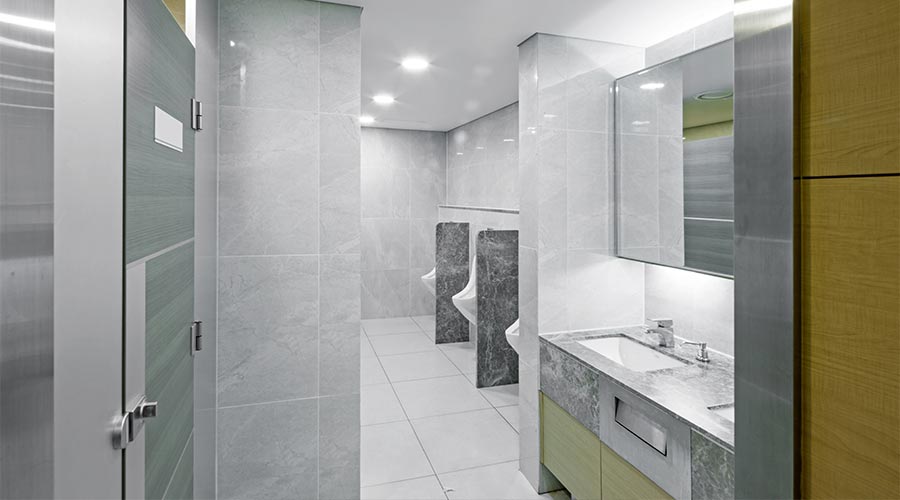
While technology offers exciting solutions, preventative maintenance remains a cornerstone of efficient restroom cleaning. Implementing a scheduled deep cleaning program helps prevent grime buildup and minimizes the effort required for daily cleaning tasks.
Equipping the frontline team with the right tools is just one piece of the puzzle. BSCs can further enhance restroom cleaning efficiency by implementing effective cleaning techniques and procedures.
Color-Coded Cleaning Systems: Utilizing a color-coded cleaning system helps prevent cross-contamination and ensures all surfaces are properly disinfected. Assigning specific-colored cloths and mops to different areas (e.g., toilets, sinks, floors) minimizes the risk of spreading germs from one surface to another.
Industry experts agree that color-coding is a simple yet highly effective way to ensure a high standard of cleanliness.
Top-Down Cleaning Approach: For maximum efficiency, BSCs are encouraged to train staff to adopt a top-down cleaning approach. This involves starting with high surfaces like shelves and mirrors and working their way down to floors. This minimizes the risk of dirty water or cleaning solutions dripping onto already cleaned surfaces.
Microfiber Mop Maintenance: Microfiber cloths and mops are only effective if properly maintained. BSCs must train the staff on the proper washing techniques using specific detergents and appropriate drying techniques to ensure optimal cleaning performance and extend the lifespan of these essential tools.
Chemical Management: Cleaning chemicals can be a double-edged sword. While effective for disinfection, overuse can damage surfaces and contribute to indoor air quality concerns. BSCs should work with a reputable supplier to choose the right chemicals for the job and educate staff on proper dilution and application techniques.
The most sophisticated tools and advanced cleaning techniques are only as effective as the people using them. Investing in comprehensive training programs for cleaning teams ensures they understand proper cleaning procedures, the importance of proper sanitization, and the safe handling of cleaning chemicals.
Beyond training, fostering open communication between frontline workers and management is crucial. Regular meetings provide a platform for addressing challenges, sharing best practices, and ensuring everyone is on the same page when it comes to restroom cleaning protocols.
Building service contractors should always be monitoring cleaning results. Doing so will help identify whether the current tools, equipment and processes in place are effective. Allen also stresses the importance of involving custodial team members when doing evaluations. BSCs should seek their input about what they feel they need to achieve better outcomes for the facility and its occupants.
Pamela Mills-Senn is a freelance writer from Long Beach, California.
Tips and Tools for Sprucing Up Restroom Routines

 Celebrating BSCAI's 60th Anniversary eBook
Celebrating BSCAI's 60th Anniversary eBook The Down and Dirty on Cleaning in Virus Season
The Down and Dirty on Cleaning in Virus Season How Surfactant Use is Expanding in Commercial Cleaning
How Surfactant Use is Expanding in Commercial Cleaning